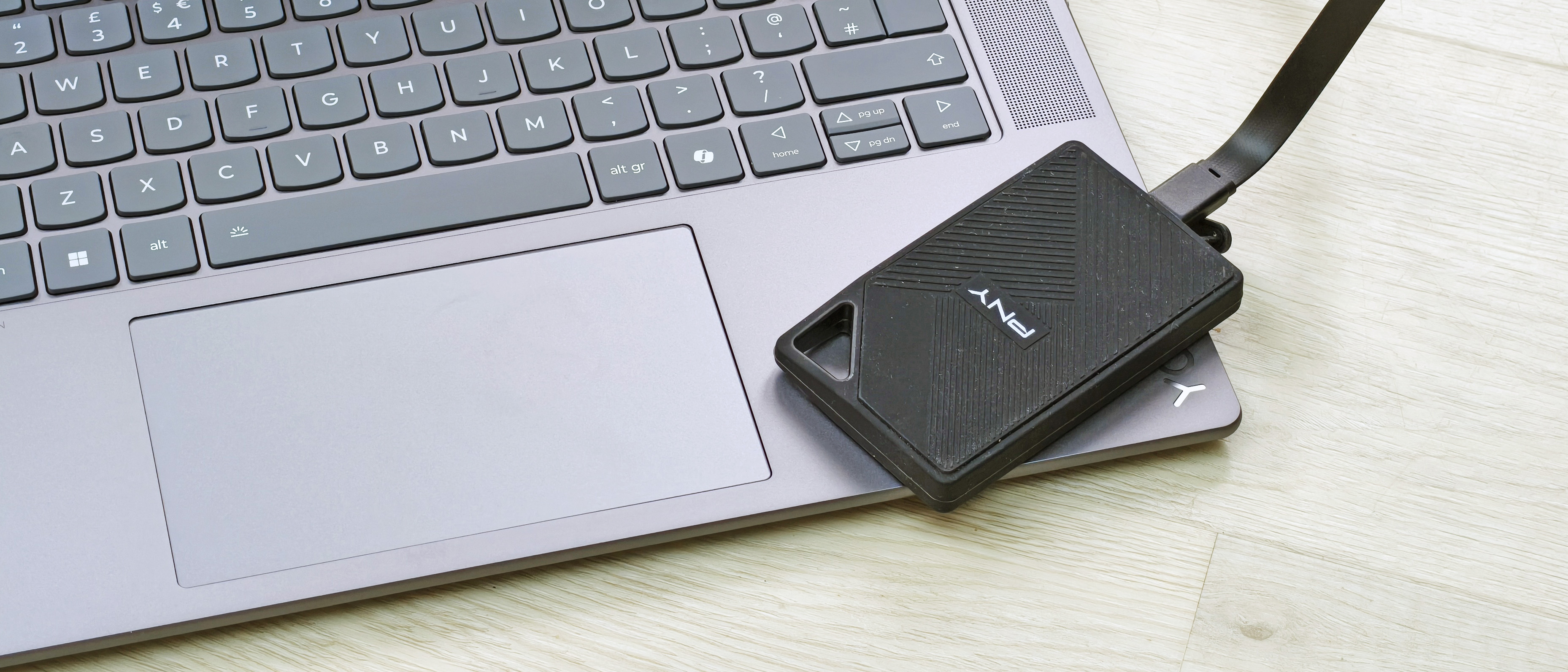Digital Camera World Verdict
The PNY RP60 portable SSD proved itself to be consistently fast in my testing. When you consider it's built to be tougher than most of its rivals, while also undercutting them on price, it's great value. The rubberized, shock-resistant exterior isn't particularly attractive and it loves to pick up dust, but that's my only minor quibble with what's otherwise a great all-round buy.
Pros
- +
Very fast
- +
Compact and lightweight
- +
Rugged
- +
Low price
Cons
- -
Dust-magnet exterior
- -
Not the sleekest
Why you can trust Digital Camera World
The best portable SSDs are great for transporting large amounts of data while still offering super-fast transfer speeds, as well as the convenience of a small device that only needs a USB connection. There are plenty of options to choose from, but the RP60 portable SSD from PNY seems to have pretty much every base covered: it's small, fast and tough. Two capacity options are available (1TB or 2TB) and both are reasonably priced. Lets see how it performs...
Features
Like most modern portable SSDs, the RP60 is small - way smaller than a traditional portable hard disk drive. It measures just 9.73 x 6 x 1.24cm (3.83 x 2.36 x 0.49 inches) so it easily fits into a jeans pocket. Unlike some sleek, metal-bodied portable SSDs, the RP60 is built to be rugged. Its shock-resistant rubberized casing helps the drive survive drops from up to 3 meters, and an IP65 ingress protection rating means water and dust shouldn't get inside. The grippy, ridged top surface is a dust magnet though, and I've owned devices with a similar rubberized coating in the past which after few years starts to degrade and ends up sticky. Hopefully the RP60 won't do the same.
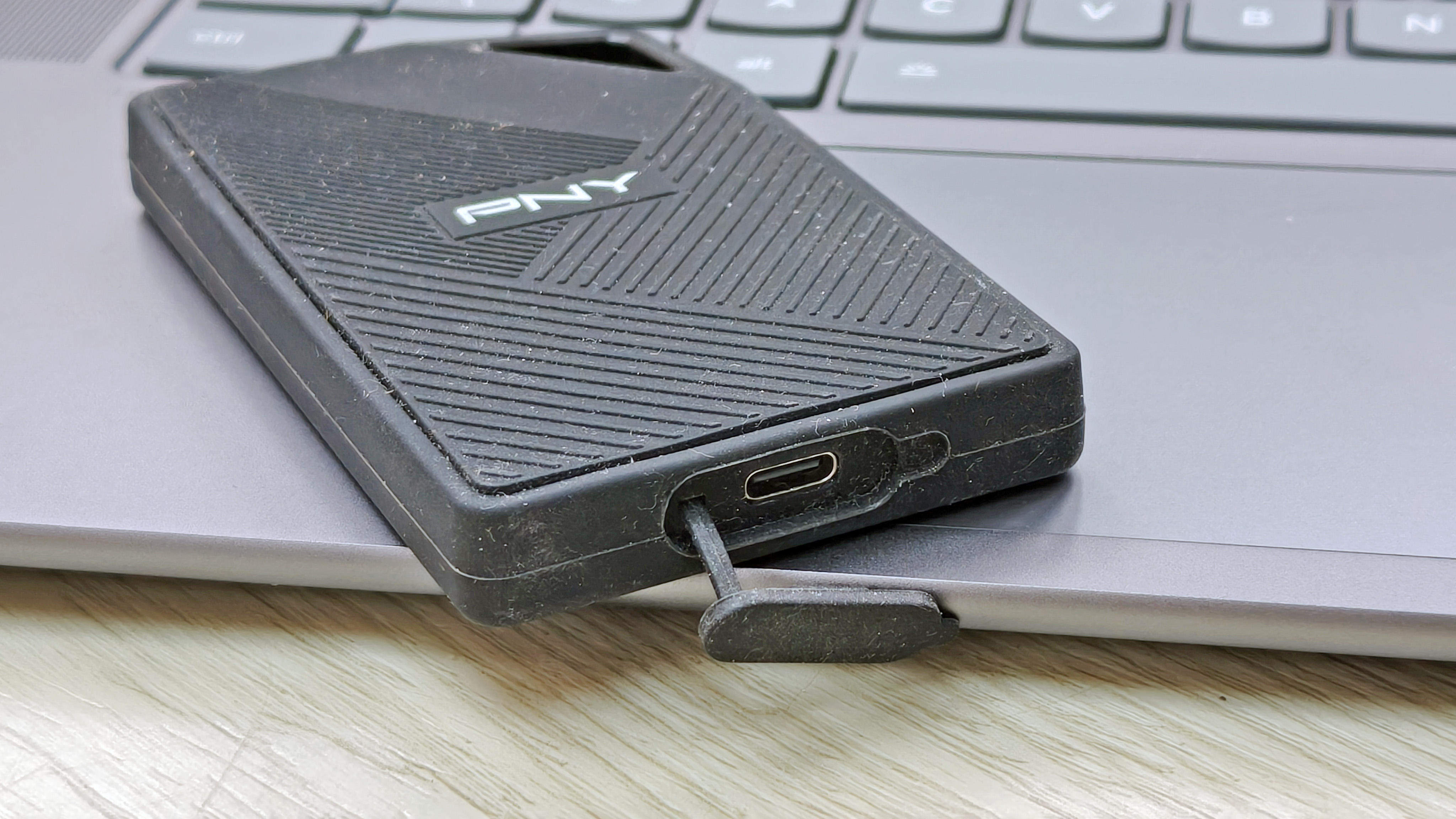
The RP60 can connect to PC, Mac, Android or iOS mobile devices, and also games consoles via its USB Type-C connection. A 30cm-long Type-C to Type-C ribbon cable is provided, but there's no Type-C to Type-A adaptor. This is because the RP60 is designed to be used with modern USB 3.2 Gen 2x2 or USB 4.0 devices, in order to perform at its best, and both these USB revisions only use Type-C ports. You could swap out the included cable for a Type-C to Type-A USB lead to connect the SSD to an older/slower USB port and it would still work, but transfer speeds would then be slowed noticeably by the host computer.
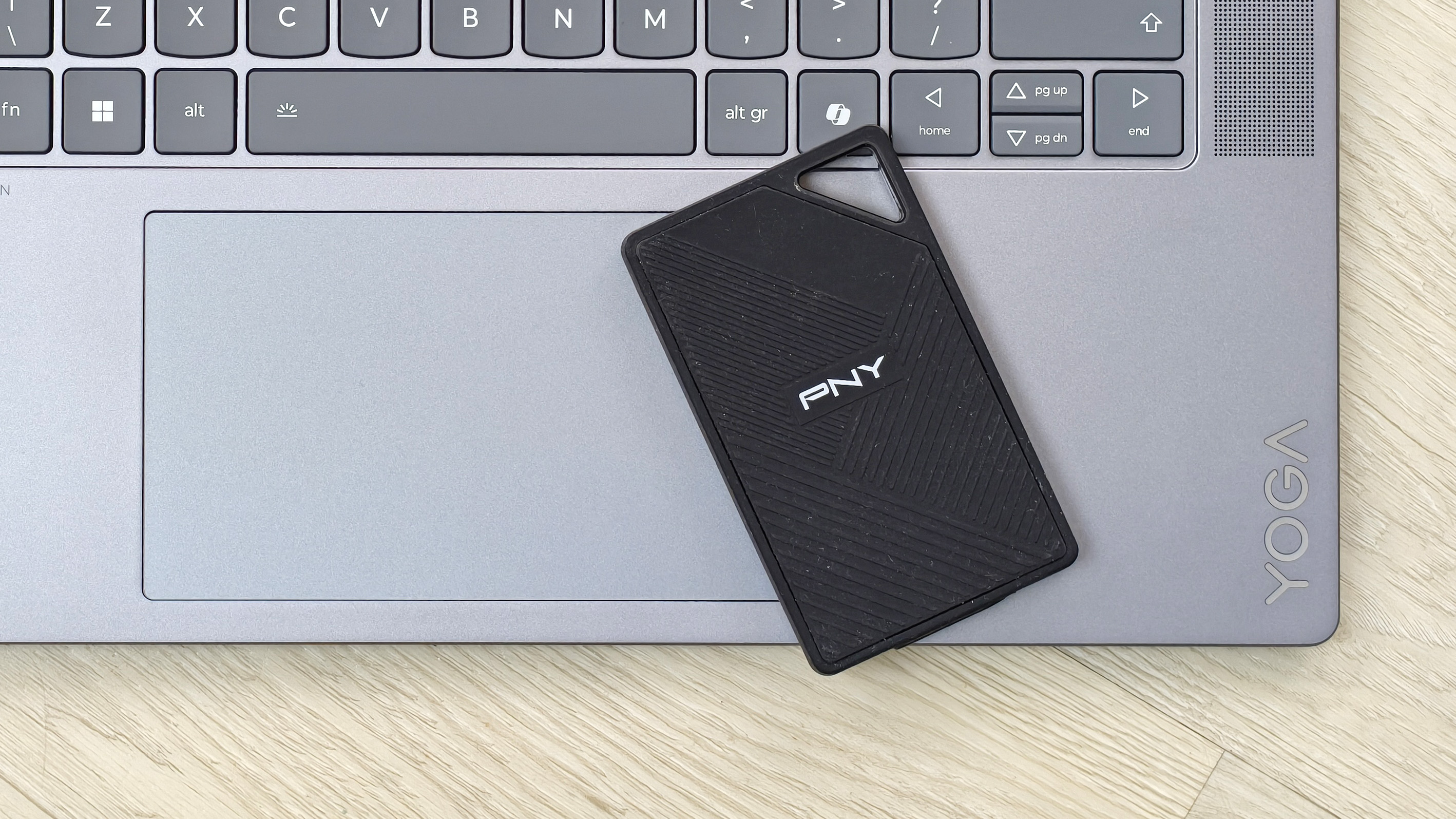
Performance
PNY claims the RP60 has a maximum read speed of 2000MB/s and a 1800MB/s peak write rate, making it one of the faster portable SSDs on the market. In order to achieve these speeds, your computer will need to support USB 3.2 Gen 2x2 (20Gbps), but since this USB revision was short-lived, it's very uncommon to find devices that support it. You're now far more likely to encounter computers with more modern USB 4.0 / Thunderbolt 4 connections, which are a twice as fast (40Gbps), and backward compatible with Gen 2x2, thus letting the RP60 run at its full potential.
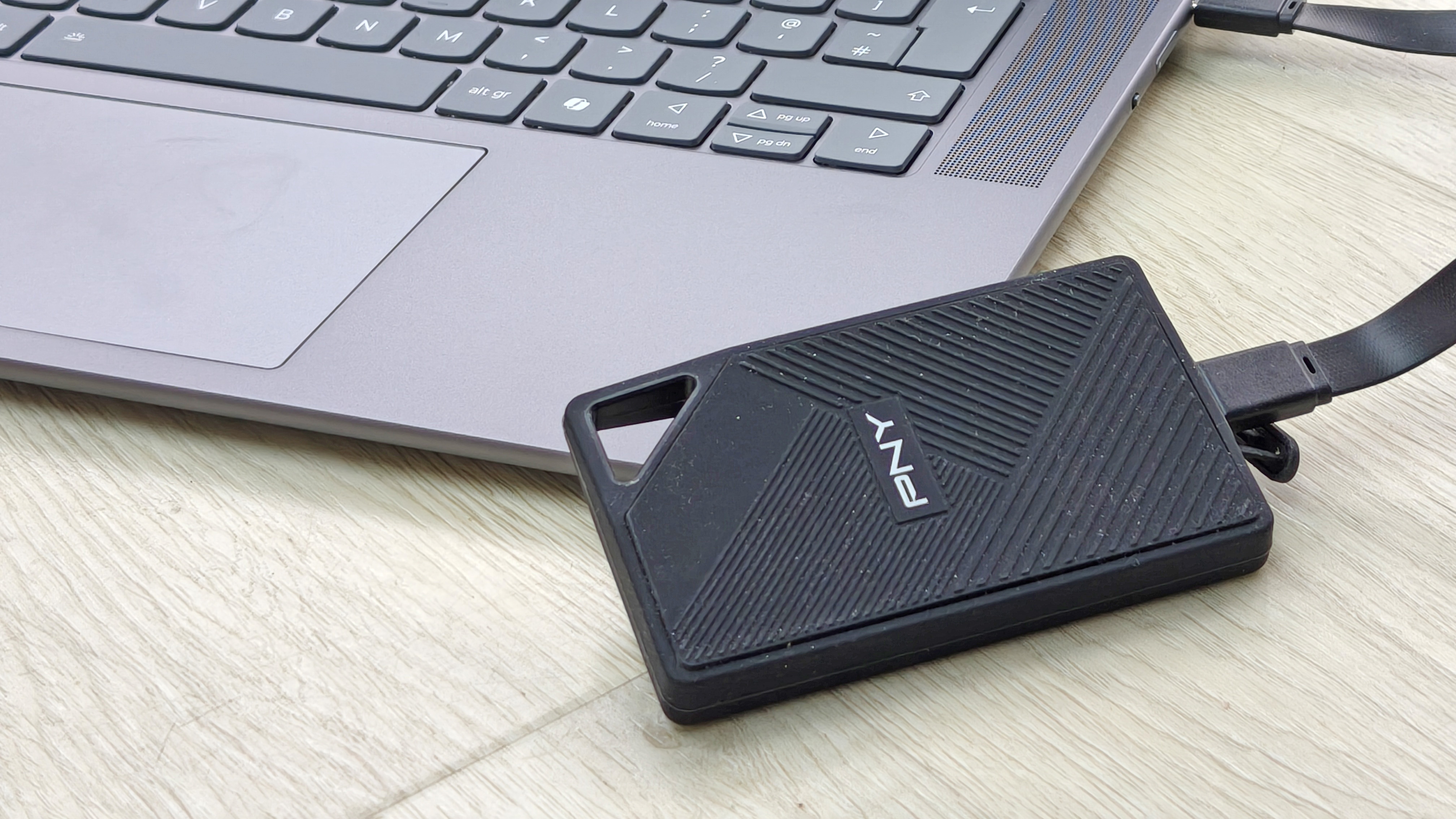
I broke out a modern Lenovo Yoga Slim 7 laptop equipped with USB 4.0 ports to see what the RP60 can really do. First impressions using CrystalDiskMark storage benchmark software are positive, with the drive immediately recording read and write speeds of 2013MB/s and 1782MB/s, respectively. That's almost exactly consistent with PNY's advertised transfer speeds.
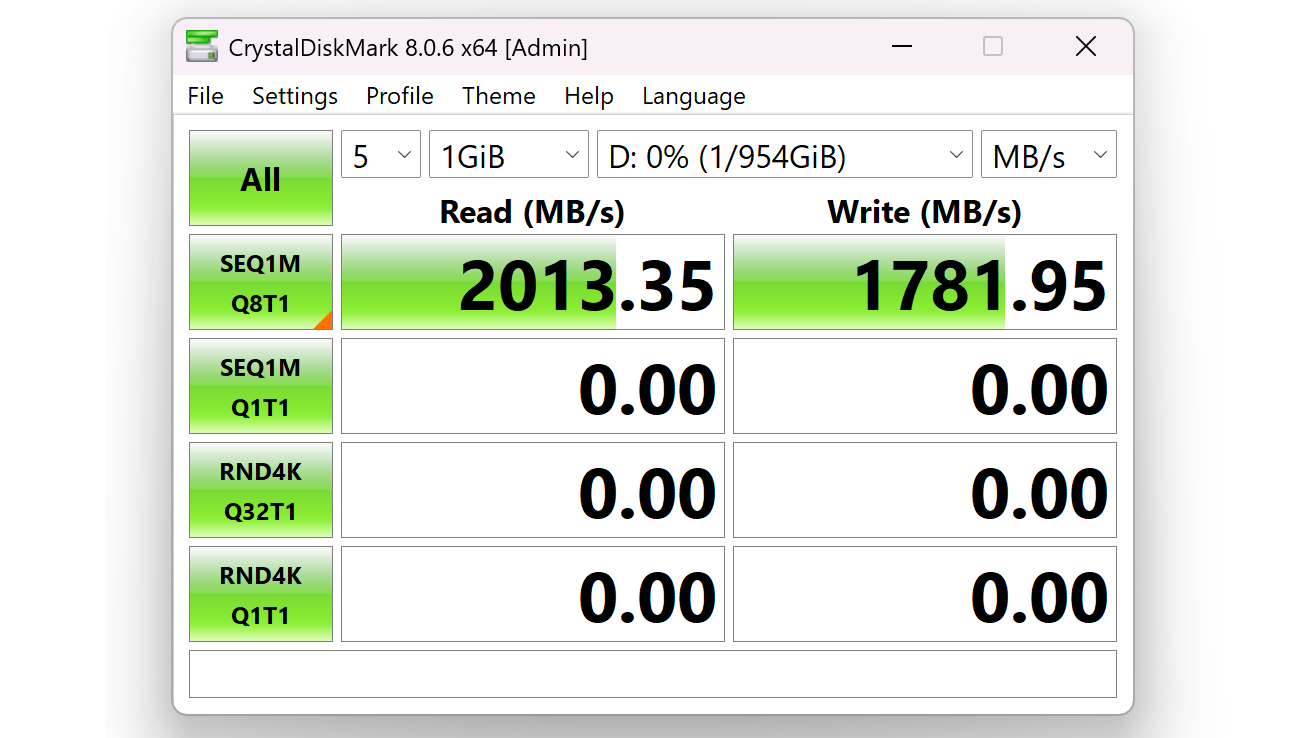
But as benchmarking software isn't a real-world representation of how an SSD will perform, I also ran some practical tests transferring files to and from the drive. I used a folder of images totalling 25.7GB, as well as one large 36.2GB file, to test how fast the drive is when transferring multiple small files and a single large file (the latter will always result in faster read/write speeds). I then transferred each file type to and from the SSD three times, and used the average speed from the quickest transfer time. The internal NVMe SSD built into my test laptop is considerably faster than the RP60, so it was not a bottleneck. Here's how the RP60 performed in this real-world testing:
| Header Cell - Column 0 | Read | Write |
|---|---|---|
Single large file | 1323MB/s | 941MB/s |
Multiple small files | 1217MB/s | 853MB/s |
As is always the case, transferring a single large is faster than moving multiple small files, but the difference is impressively minimal. It's a pity these real-world transfer speeds aren't closer to the theoretical maximum speed of the drive, but unless you're shifting hundreds of gigabytes of data on a regular basis, you should still find this 850+ MB/s performance more than rapid enough.
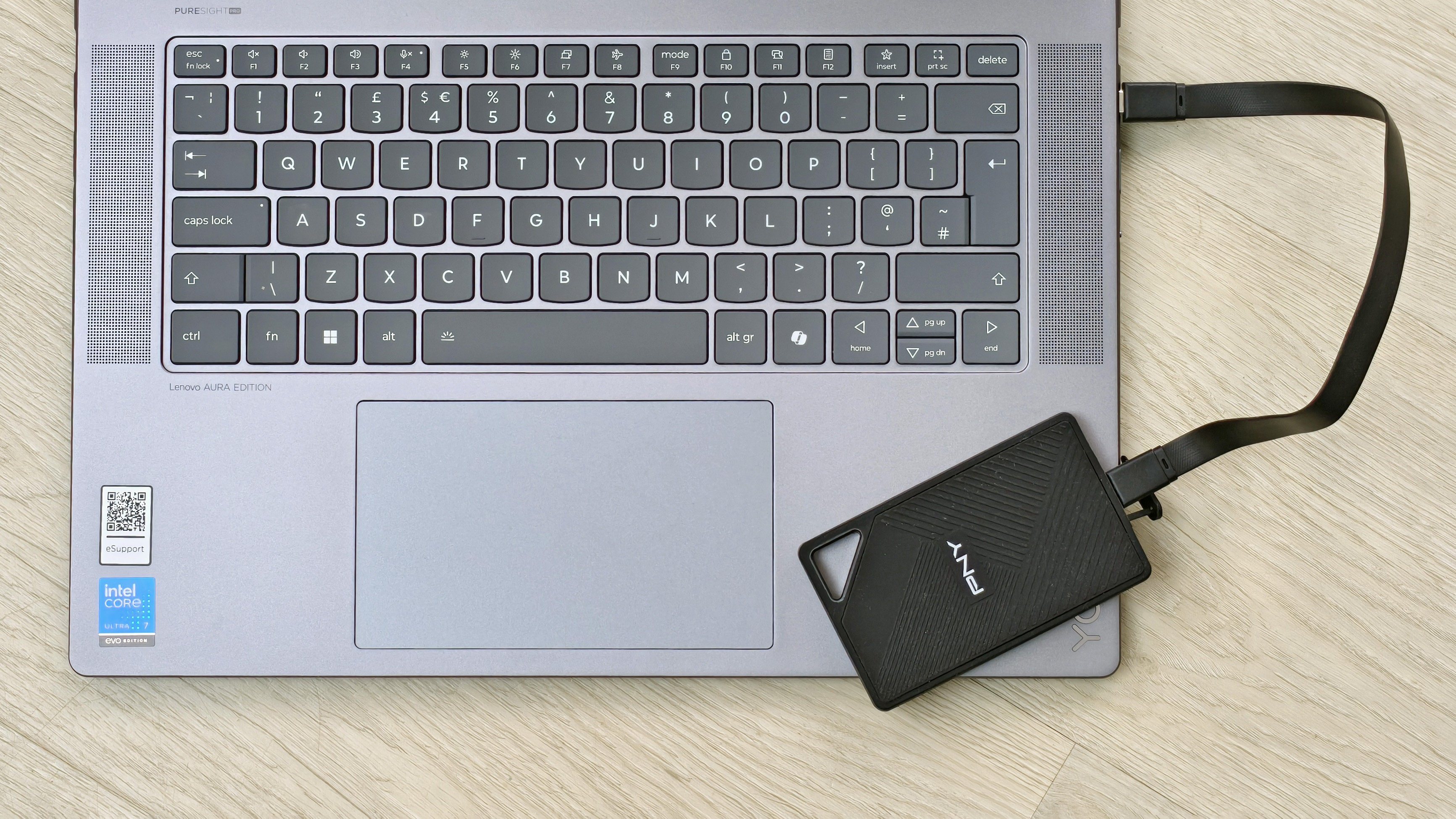
Verdict
The price of portable SSDs tends to fluctuate in line with the market cost of solid state memory, but at the time of writing the 2TB PNY RP60 is cheaper than rival portable SSDs such as SanDisk's 2000MB/s Extreme PRO, the 2000MB/s Samsung T9, and even the 2100MB/s Crucial X10 (a portable SSD that's usually priced very aggressively). Given the impressive performance of the RP60, as well as its rugged and waterproof build, it's hard to find any significant drawbacks here. If you're after compact yet fast portable storage that's also rugged, the PNY RP60 is a great buy.
Ben is the Imaging Labs manager, responsible for all the testing on Digital Camera World and across the entire photography portfolio at Future. Whether he's in the lab testing the sharpness of new lenses, the resolution of the latest image sensors, the zoom range of monster bridge cameras or even the latest camera phones, Ben is our go-to guy for technical insight. He's also the team's man-at-arms when it comes to camera bags, filters, memory cards, and all manner of camera accessories – his lab is a bit like the Batcave of photography! With years of experience trialling and testing kit, he's a human encyclopedia of benchmarks when it comes to recommending the best buys.
You must confirm your public display name before commenting
Please logout and then login again, you will then be prompted to enter your display name.
